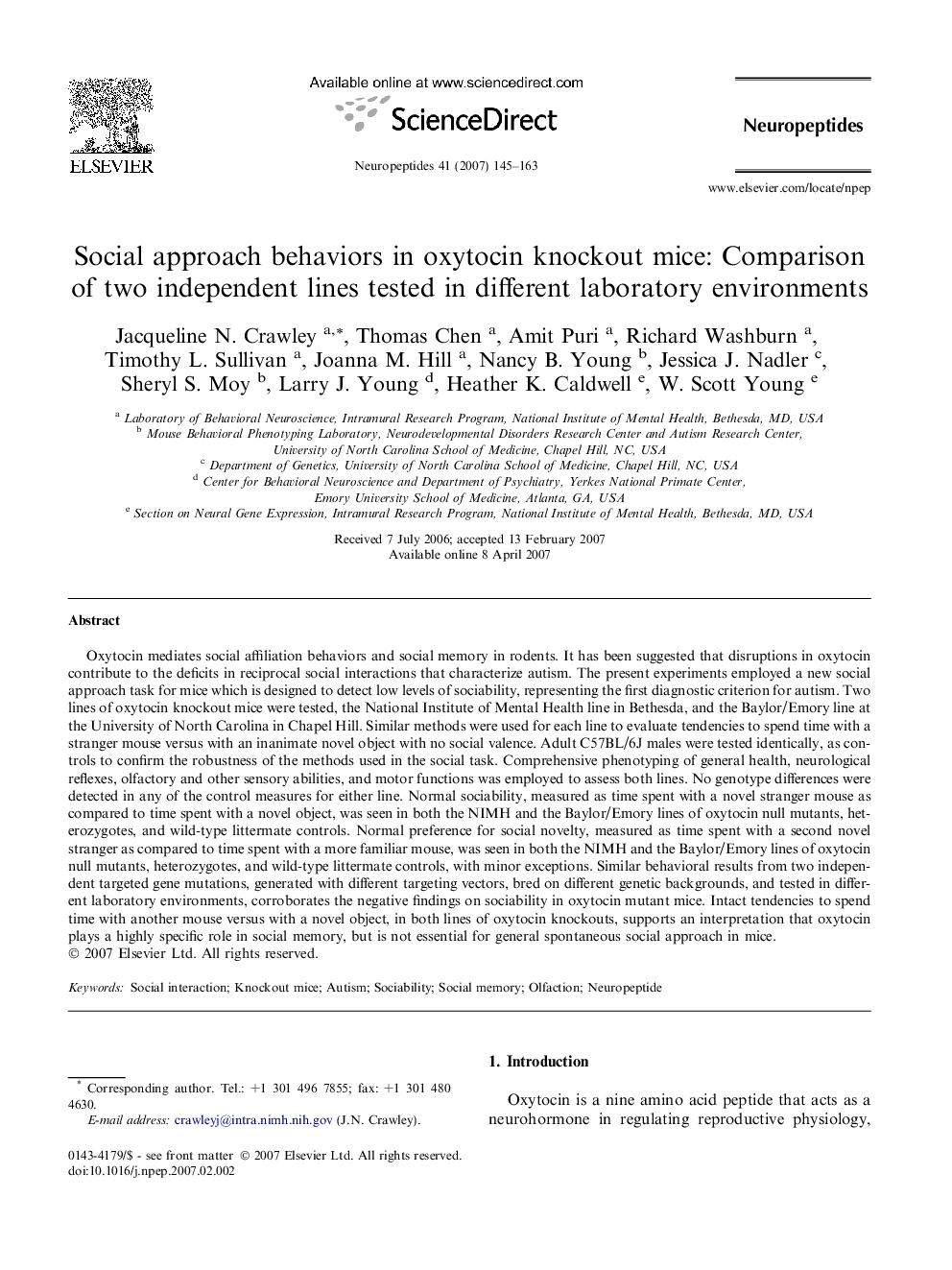| Article ID | Journal | Published Year | Pages | File Type |
|---|---|---|---|---|
| 2808668 | Neuropeptides | 2007 | 19 Pages |
Oxytocin mediates social affiliation behaviors and social memory in rodents. It has been suggested that disruptions in oxytocin contribute to the deficits in reciprocal social interactions that characterize autism. The present experiments employed a new social approach task for mice which is designed to detect low levels of sociability, representing the first diagnostic criterion for autism. Two lines of oxytocin knockout mice were tested, the National Institute of Mental Health line in Bethesda, and the Baylor/Emory line at the University of North Carolina in Chapel Hill. Similar methods were used for each line to evaluate tendencies to spend time with a stranger mouse versus with an inanimate novel object with no social valence. Adult C57BL/6J males were tested identically, as controls to confirm the robustness of the methods used in the social task. Comprehensive phenotyping of general health, neurological reflexes, olfactory and other sensory abilities, and motor functions was employed to assess both lines. No genotype differences were detected in any of the control measures for either line. Normal sociability, measured as time spent with a novel stranger mouse as compared to time spent with a novel object, was seen in both the NIMH and the Baylor/Emory lines of oxytocin null mutants, heterozygotes, and wild-type littermate controls. Normal preference for social novelty, measured as time spent with a second novel stranger as compared to time spent with a more familiar mouse, was seen in both the NIMH and the Baylor/Emory lines of oxytocin null mutants, heterozygotes, and wild-type littermate controls, with minor exceptions. Similar behavioral results from two independent targeted gene mutations, generated with different targeting vectors, bred on different genetic backgrounds, and tested in different laboratory environments, corroborates the negative findings on sociability in oxytocin mutant mice. Intact tendencies to spend time with another mouse versus with a novel object, in both lines of oxytocin knockouts, supports an interpretation that oxytocin plays a highly specific role in social memory, but is not essential for general spontaneous social approach in mice.
